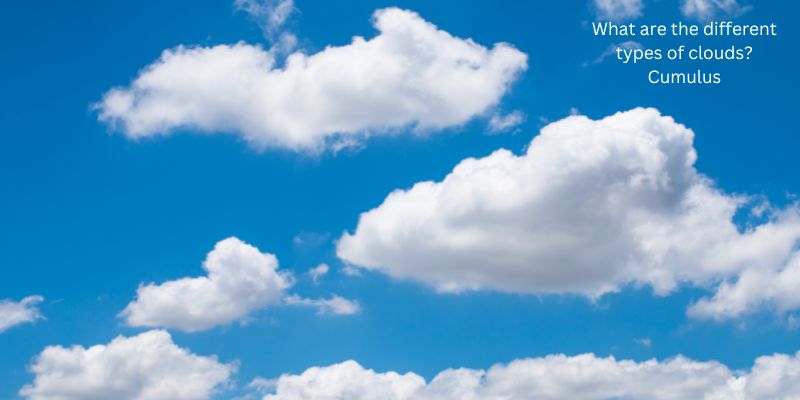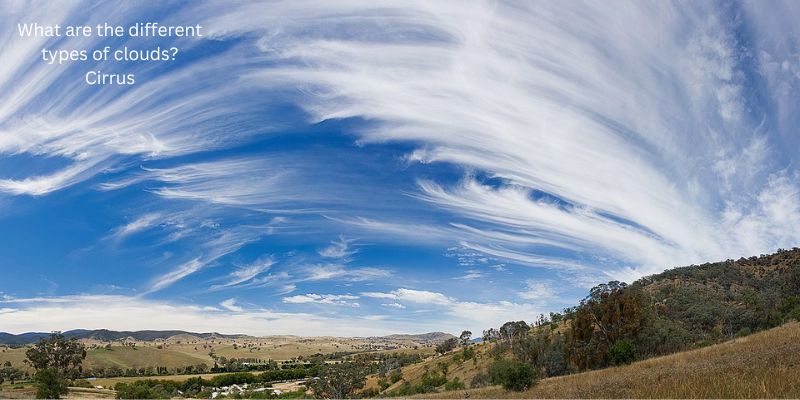There are more than 100 different kinds of clouds, according to the International Cloud Atlas of the World Meteorological Organization. Nevertheless, the numerous variants may be classified into one of ten fundamental kinds based on their overall appearance and altitude in the sky. In this blog, with newtimezz.com, let’s find out some useful information to answer the question: what are the different types of clouds?
Contents
- 1. What are the different types of clouds? Cumulus
- 2. What are the different types of clouds? Stratus
- 3. What are the different types of clouds? Stratocumulus
- 4. What are the different types of clouds? Altocumulus
- 5. What are the different types of clouds? Nimbostratus
- 6. What are the different types of clouds? Altostratus
- 7. What are the different types of clouds? Cirrus
- 8. What are the different types of clouds? Cirrocumulus
- 9. What are the different types of clouds? Cirrostratus
- 10. What are the different types of clouds? Cumulonimbus
1. What are the different types of clouds? Cumulus

Early drawings of cumulus clouds serve as a universal representation of all clouds, much as how a snowflake represents winter. While their bottoms are flat and mostly black, their tops are spherical, puffy, and bright white when exposed to sunlight. When Will You See Them? On bright, sunny days, cumulus clouds form as the sun heats the ground directly underneath them (diurnal convection). They were given the moniker “fair weather” clouds because of this. They emerge in the late morning, develop, and then vanish in the late afternoon.
2. What are the different types of clouds? Stratus
Stratus clouds are flat, featureless, homogeneous layers of grey cloud that hang low in the sky. They resemble fog that follows the horizon rather than the surface. When Will You See Them? On gray, cloudy days, stratus clouds are visible and are sometimes accompanied by a light mist or drizzle.
3. What are the different types of clouds? Stratocumulus
You would obtain stratocumulus, which are low, puffy, grayish or white clouds that appear in patches with blue sky visible in between, if you took an imagined knife and spread cumulus clouds together over the sky but not into a smooth layer (like stratus). From below, stratocumulus seem like a black honeycomb.
When You’ll See Them: On days with a majority of clouds, stratocumulus is most likely to be visible. They develop when there is slight convection in the atmosphere.
4. What are the different types of clouds? Altocumulus

The most frequent clouds in the intermediate atmosphere are altocumulus clouds. They appear in the sky as enormous, spherical masses of white or gray patches, or as clouds that are arranged in parallel bands. They are known by the nicknames “sheep backs” and “mackerel skies” because they resemble sheep fleece or the scales of a mackerel fish.
Identifying Stratocumulus and Altocumulus: It’s common to mix up stratocumulus and altocumulus. In addition to being higher in the sky, altocumulus may also be distinguished by the size of each cloud mound. If the cloud has a mound the size of your thumb when you raise your hand to the sky and in the direction of the cloud, it is an altocumulus. (If it is closer to the size of a fist, it is most likely stratocumulus.)
When Will You See Them? In the summer, altocumulus are frequently seen on warm, muggy mornings. They may indicate the arrival of thunderstorms later in the day. They may also be visible before cold fronts, in which case they mark the beginning of colder weather.
5. What are the different types of clouds? Nimbostratus
The sky is blanketed in a layer of dark gray nimbus clouds. They are thick enough to block out the light and can stretch from the lower and middle levels of the atmosphere. When Will You See Them? The classic rain cloud is a nimbostratus. They appear anytime there is consistent rain or snow falling (or expected to occur) across a big region.
6. What are the different types of clouds? Altostratus
At mid-levels, altostratus appears as gray or bluish-gray sheets of cloud that partially or completely obscure the sky. Despite the fact that they block the sky, you can usually still see the sun behind them as a faintly lighted disk; however, not enough light enters to create shadows on the ground. When Will You See Them? Altostratus frequently develops before a warm or obscured front. They can also appear at a cold front together with cumulus.
7. What are the different types of clouds? Cirrus

As its name (which is Latin for “curl of hair”) suggests, cirrus clouds are tiny, white, wispy strands of clouds that run across the sky. Because they form above 20,000 feet (6,096 m), where it is frigid and there is little water vapor, cirrus clouds are made up of tiny ice crystals rather than water droplets.
When You Will See Them: Cirrus generally occurs with clear skies. Seeing them can also be a sign that storms may be approaching because they can develop ahead of warm fronts and major storms like nor’easters and tropical cyclones. “Mares’ tails (cirrus) and mackerel scales (altocumulus) make lofty ships to carry low sails,” according to a nautical saying that sailors learnt to warn them of impending wet weather.
8. What are the different types of clouds? Cirrocumulus
Cirrocumulus clouds are small, white patches of cloud that are commonly arranged in rows. They are made of ice crystals. They can be found at very high altitudes. When compared to altocumulus and stratocumulus, cirrocumulus’ individual cloud mounds, commonly referred to as “cloudlets,” are substantially smaller and frequently resemble grains. When to Look for Them: Cirrocumulus clouds are uncommon and often short-lived, although you may look for them in the winter or on chilly but clear days.
9. What are the different types of clouds? Cirrostratus
Cirrostratus clouds are white, translucent veils or blankets that almost completely cover the sky. Look for a “halo” (a ring or circle of light) surrounding the sun or moon to instantly identify cirrostratus. Similar to how sundogs develop, but in a whole circle rather than simply on each side of the sun, the halo is created by the refraction of light on the ice crystals in the clouds. When Will You See Them? Cirrostratus are signs that there is a lot of moisture in the upper atmosphere. They frequently coincide with incoming warm fronts.
10. What are the different types of clouds? Cumulonimbus
One of the rare clouds that transcend the low, medium, and upper levels are cumulonimbus clouds. Except for the fact that they rise into towers with protruding upper parts that resemble cauliflower, they are similar to the cumulus clouds from which they develop. The tops of cumulonimbus clouds are often always flattened, like an anvil or plume. They frequently have foggy, dark bottoms.
When Will You See Them? If you see a cumulonimbus cloud, which is a thunderstorm cloud, you may be confident that severe weather (including hail, tornadoes, and potentially brief but intense bursts of rain) is imminent.
I hope you found the information in this article about what are the different types of clouds useful. Have a great day!





